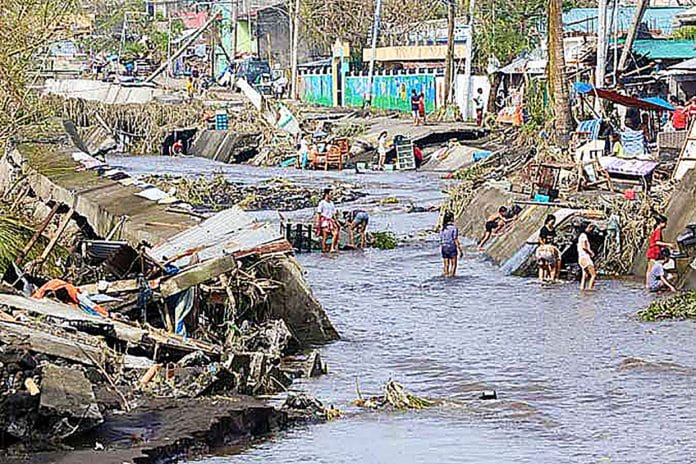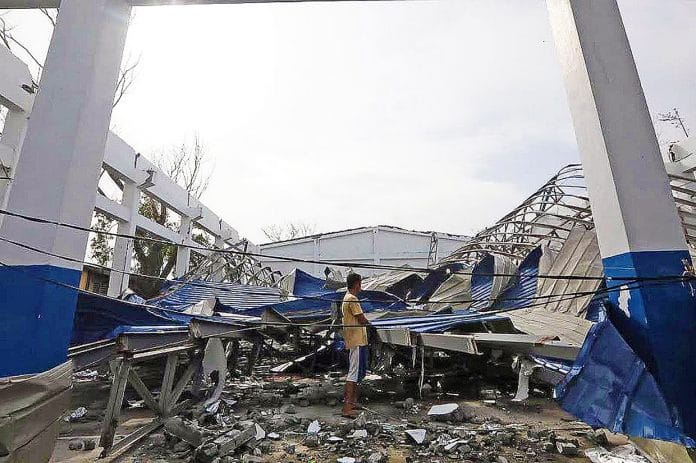During the 37th National Convention of the United Architects of the Philippines (UAP) 2011, former Public Works Secretary Rogelio Singson said that as designers and builders of society, “the United Architects of the Philippines should play an active role in integrating efforts to respond to disaster risk reduction by designing safe and resilient structures. I have said, the price to pay for failure to comply with the appropriate laws, particularly the national building code, is very stiff by putting the lives of other people at risk. We should also be aware and build away from known hazard zones precisely because of our long term view.”
This continues to be relevant, especially today as typhoons batter the Philippines.
Just recently, super typhoon Rolly struck the Philippines with a signal number 5 hoisted up by weather forecasters in certain areas. And we were more shocked to learn of another typhoon just behind it. That was a double whammy that has caused a lot of devastation to structures and the environment and has led to the loss of lives.
ROLE OF ARCHITECTS
Medical and technical professionals have always played a significant role in reducing disaster risks. Architects have stepped up their contributions to society by designing and building infrastructures in safe communities, minimizing construction in hazard-prone areas, and helping post-disaster efforts.

Architects have capitalized building on their experiences with the sole objective of constructing resilient communities, contributing to the changing technological advancement to bring order to mankind and even survive extreme natural hazard conditions. Society has come to realize that with an increasing population, structures must be sustainable. With the increasing occurrence of natural calamities, we must also be resilient to survive.
Architects perform corporate social responsibility projects and partner with the local governments to save more lives, especially in times of natural calamities. We understand how and where to build, define the natural systems of the land, leverage vulnerabilities and community assets, and even estimate the housing and job opportunities, including the costs of inactions in building sustainable communities.
Architects are good at disaster resiliency because we are good planners. We foresee or anticipate disasters and plan better to reduce disaster losses, man-made, or natural. We do not wait for the events to happen. However, foreseeing and acting on disaster resilience comes with a cost that is not inexpensive.
That is why the UAP is always extending its collaborative partnerships with government and societies as its members are designers and builders of vertical structures for mankind. The National Building Code has always put a premium on safety to protect people living in communities, especially those in disaster-prone areas.
BUILDING PERMITS
Today as I remember the words expressed by then-Secretary Singson on the price to pay for failure to comply with the appropriate laws, more particularly, the National Building Code, I am deeply concerned why the DPWH has not completely published the ancillary permits most especially the civil and structural permits and the architectural permits as attachments to the building permit.

Surprisingly, the National Building Code mentions that building permits will not be approved without the ancillary permits. The purpose of the ancillary permits is to hold accountable the right professional in the Design and Build area of responsibility. This means that if a natural calamity happens or just in the normal use of a building, and a structure will collapse due to defects attributed to poor plans and specifications or defects on the ground, the right professional will be held liable under Article 1723 of the Civil Code of the Philippines, after undergoing thorough investigations.
I firmly believe that the right professional should be the responsible party in the event the buildings collapse for defects on the plans and specifications of a building, or defects on the ground.
As it is now, people point to Building Officials as the culprits liable when something happens to structures because they are the ones who approved the building permits even without the complete ancillary permits. The law states that the building permit is null and void without the ancillary permits.
So what should we prepare for when natural calamities occur or when the “big one” happens?
First, we should have an emergency response plan for our families or organization or even the local government. Know from our government agencies the necessary information on the extent of the natural calamity and if we will be affected. We need to prioritize emergency supplies such as water, food, power, clothing, communications, transportation and extra cash. We should not rely much on the government for our survival or on outside communications when things get nasty.
In one of the speeches of President Rodrigo Duterte, he stated, “We need a truly empowered department characterized by unity of command, science-based approach, and full-time focus on natural hazards and disasters to take charge of disaster risk reduction.”
The Philippines is one of the disaster-prone areas in the world. In fact, in terms of disaster risk, the Philippines ranked third among the countries with the highest risks worldwide according to the World Risk Report of 2018. That is why we should prepare for any eventuality, and I mean really prepare in advance.
